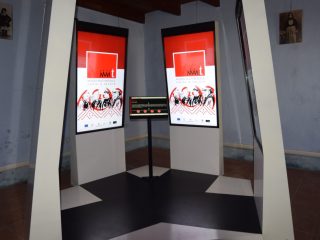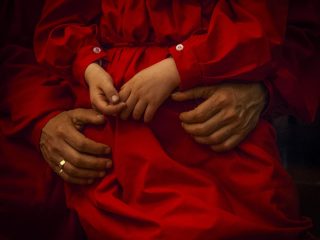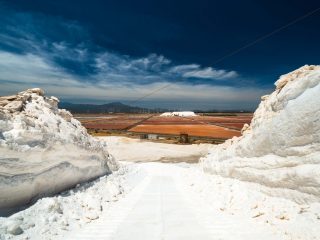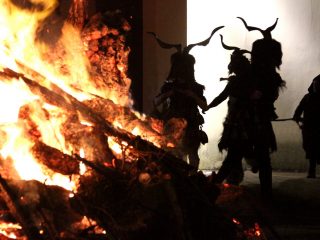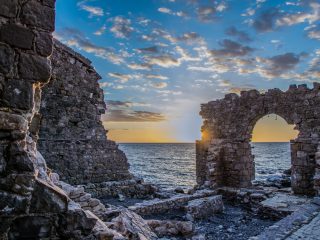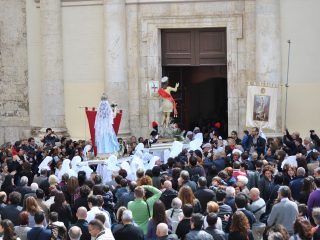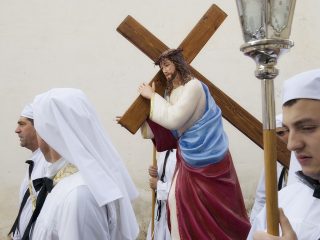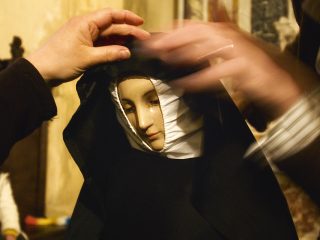The carnival of Bosa, known as “Karrasegare Osinku” is unique. It features parodic events and presents itself as an ode to freedom and enjoyment. In the past, the carnival started on New Year’s night when the dance hall opened. From ancient times, dancing was one of the most important forms of entertainment and the entire community of Bosa would take part, acquiring a clear meaning of social bonding. The celebrations and dances continued every Sunday until Lent.
Nowadays, the main days of the Karrasegare are Shrove Thursday, Sunday, Monday and Tuesday of carnival. “Questua di Lardazholu” can be added to these which is the Thursday before Shrove Tuesday. On these days, the masks go around the houses in the town singing traditional Sardinian songs or even improvised songs, which generally narrate the most scandalous vicissitudes of some of the town’s people, using ironic and vulgar verses. In exchange for their performances, they receive different kinds of food gifts (for example sausage, cheese, fruit and sweets).
The most important day of the carnival is Tuesday, which sees the involvement and participation of the entire community. Key players on the day are the mask of the funeral lament (known as “s’attittidu”) and that of “Gioldzi”.
The masks of “s’attittidu” are dressed as widows, with a long black skirt, corset and wide black shawl with fringes, and their face is covered in soot (obtained from burnt cork). The “Attittadoras” grieve the death of “Gioldzi” (the king of the carnival), who is represented by a doll or puppet made from rags and generally has no arms or legs; they parade through the streets of the city imploring the unmasked women to breastfeed their little “Gioldzi” which they carry in their arms. The satirical nature and sexual references are clear.
In the evening after the parade of allegorical floats, the Attittadoras disappear and change their costumes, transforming into the mask of “Gioldzi”. This is part of the category of white masks, representing the spirits of the carnival which is about to end. Indeed, the costume consists of a white cape made using sheets, and a hood created with a pillowcase; the face of the “Gioldzi” is painted black with soot. They carry a traditional wicker basket with a candle or lantern inside.
At night, the “Gioldzi” masks wander continually through the streets of the town, like ghosts trying to catch each other, and creating a truly fascinating spectacle. When someone manages to capture a “Gioldzi” the puppets used to depict them are burnt in a large bonfire, symbolically marking the end of the carnival.








